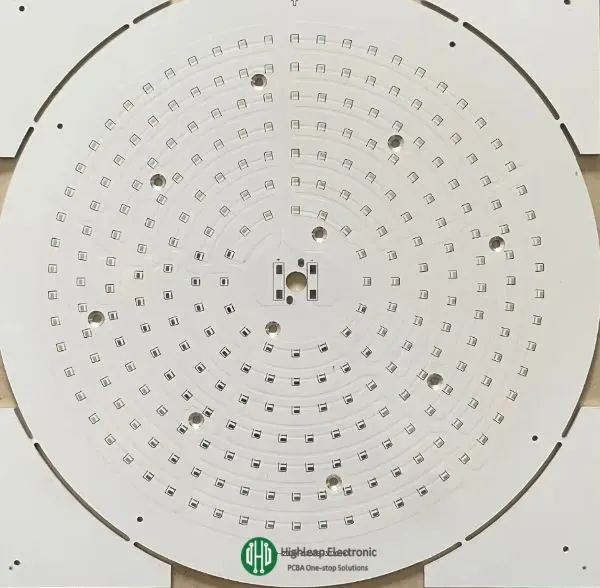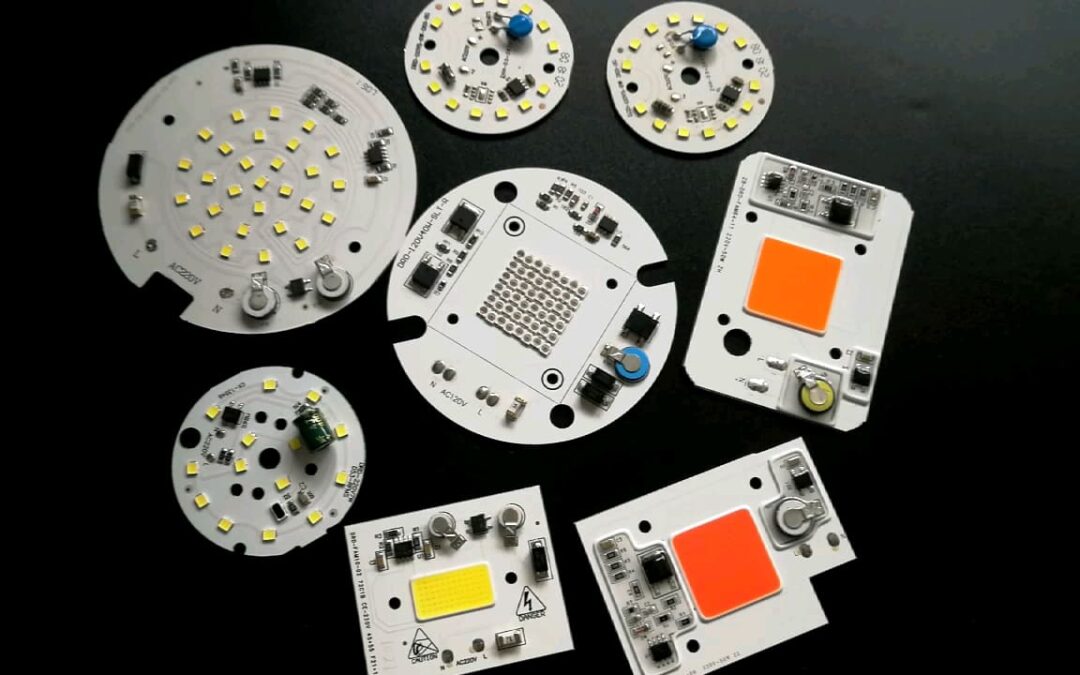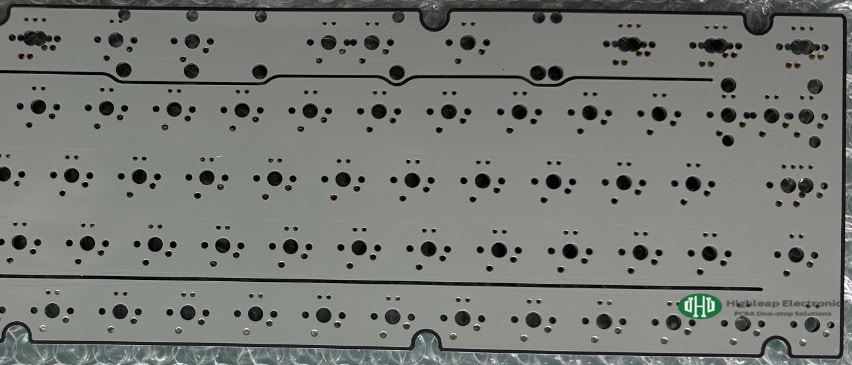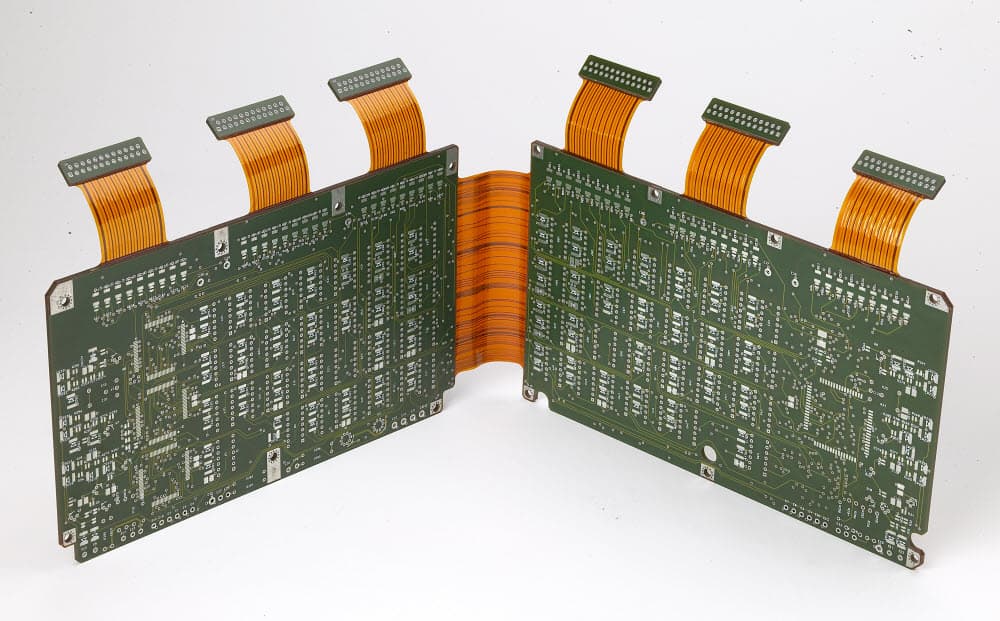Back to blog
Polyimide PCB: A Comprehensive Guide for Beginners
Introduction to Polyimide PCBs
Polyimide PCBs are an emerging class of boards utilizing the specialized polyimide polymer as the base substrate material instead of conventional materials like FR4. The boards provide enhanced durability, thermal resilience, chemical resistance, and physical flexibility compared to traditional circuit boards.
Let’s explore polyimide PCB technology further:
Unique Properties of Polyimide Substrates
Polyimide possesses certain intrinsic properties that make it well-suited for developing advanced, mission-critical printed circuits:
Extreme Temperature Tolerance
Polyimide has a very wide working temperature range from -269°C to over 400°C for certain high-temperature formulations. This is significantly higher than the working range for standard FR4 material.
High-temperature durability allows polyimide PCBs to operate reliably in applications with extreme thermal environments like aerospace, automotive engine compartments, energy and defense systems.
Flexibility and Shape Conformability
Polyimide substrates are fabricated as thin films that can be bent, twisted and shaped without damage. This physical flexibility allows conformal mounting of polyimide circuit boards onto irregular, curved surfaces.
It also prevents fractures due to repeated bending stress which suits applications with dynamic mechanical environments and frequent physical handling.
Chemical and Solvent Resistance
Polyimide offers broad chemical resistance, allowing stable performance when exposed to automotive fuels, hydraulic fluids, paints and other corrosive agents. This makes it suitable for applications which risk chemical spill damage.
High Reliability in Vibration/Shock Conditions
The elasticity of the polyimide substrate provides damping against system vibration and mechanical shocks. This prevents failure related to substrate cracks/fractures that could affect solder joints or traces.
Reliable connectivity is thus ensured even in settings with continual vibration like aircraft, spacecraft and defence systems.
Types of Polyimide PCBs
Polyimide boards primarily come in two technology variants:
Flexible Polyimide PCB
These utilize polyimide substrate to create thin, bendable circuit boards that can conform to tight spaces and irregular shapes.The flexible boards provide design freedom for products like wearables, medical devices etc. where the circuit needs to curve around human body contours.
For instance, flexible wristband health trackers leverage polyimide flex circuitry to mount sensors, microcontrollers, Bluetooth modules etc. in a comfortable, ergonomic form factor.
Rigid-Flex PCB
These boards combine standard rigid FR4 substrate layers with flexible polyimide layers bonded together into a hybrid circuit board. The rigid portions provide stability for component mounting while the flex layers enable complex routing between sections.
Rigid-flex PCBs save space in aerospace avionics systems with constrained footprint requirements across modules like GPS, accelerometers, gyroscopes, flight control electronics.
Polyimide Circuit Boards in Critical Applications
Polyimide’s specialized properties have made it the substrate material of choice for multiple demanding industrial segments:
Automotive Electronics
Stringent safety and reliability requirements in vehicles necessitate electronics that deliver flawless performance over 15+ years despite exposure to underhood heat, automotive fluids, vibration and mechanical shocks.
Polyimide’s resilience to such environmental stresses ensures uninterrupted vehicle functionality spanning critical applications like engine control units, ABS, diagnostics etc.
High-reliability automotive suppliers like Denso already utilize polyimide boards across multiple subsystems where failure could endanger human lives.
Avionics and Space Systems
Aerospace applications demand lightweight but extremely robust PCB solutions given the challenging operating conditions. This includes temperature swings from -50°C to 125°C, continual vibration, shock loads on takeoff/landing and potential exposure to hydraulic fluids & cleaning agents.
Polyimide substrate properties like high heat tolerance, vibration resistance and chemical inertness ensure consistent performance despite such environmental stresses. Leading players in aerospace like Boeing, Airbus, NASA etc. already extensively use polyimide PCBs across guidance systems, engine controls and other critical flight electronics.
Medical Devices
Implantable devices like pacemakers mandate biocompatible, ultra-reliable circuit boards to ensure patient health for over a decade of deployed use. Polyimide’s moisture absorption resistance and tissue-friendly nature makes it ideal for such human body interfaces over prolonged periods.
Polyimide’s heat resistance also allows effective sterilization of medical electronics through autoclaving without any performance degradation. This prevents pathogen transfer across patients – a key requirement for disposable use-and-throw devices.
Case Study: Highleap Specializes in Polyimide PCB Solutions
Highleap is a technology leader in supplying specialized PCB solutions to global aerospace, defense, telecom infrastructure and industrial customers:
Capabilities Spanning Prototyping to Volume Manufacturing
With over 15 years of experience, Highleap offers end-to-end support – right from initial design, simulation and prototyping to eventual volume fabrication & testing of complex polyimide boards.
It possesses integrated in-house capabilities for quick-turn engineering verification builds as well as high-volume manufacturing with consistent quality.
Stringent Quality Processes
Highleap is AS9100 and ISO 9001 certified, adhering to strict process controls mandated by the aerospace industry. All manufacturing occurs in dust-free cleanrooms with extensive inspection and testing protocols in place to prevent defects and ensure six sigma quality levels.
Customized Offerings for Unique Requirements
Leveraging deep materials science and fabrication expertise, Highleap supports customized polyimide-based solutions tailored to each customer’s application requirements across parameters like dielectric thickness, layer counts, dimensional stability etc.
By partnering with Highleap as the chosen polyimide PCB supplier, global customers have been able to realize innovations in product miniaturization, operational performance, field reliability and life cycle costs across demanding technology domains.
The Road Ahead
Polyimide printed circuit board technology will be vital to push the frontiers of electronics innovation as Moore’s Law slows down amidst growing materials challenges.
With conventional silicon systems hitting limits, pioneering substrate materials like polyimide that enable continuing breakthroughs across form factors, thermal profiles and mechanical resilience will be key to future progress.
Polyimide substrates provide exceptional performance in flexible printed circuits, owing to their outstanding thermal, chemical, and electrical protection capabilities. These inherent qualities make polyimide an ideal choice for applications that demand reliable functionality in extreme conditions and critical settings, including military jets, medical devices, and space vehicles. If you are contemplating the use of polyimide in your designs, we encourage you to reach out to us today. Our team can discuss your specific application and requirements, and determine if a polyimide-based flexible PCB solution can deliver the advanced performance your product needs while staying within your budgetary constraints.
PCB & PCBA quick quote
Related Articles

Metal Core PCB,MCPCB,Thermal Conductive PCB Material Guide
Metal Core Printed Circuit Boards (MCPCBs)Hey, welcome to the interesting world of Metal Core Printed Circuit Boards (MCPCBs)! Ordinary PCBs use an FR4 dielectric core, but MCPCBs are different. They use a metal substrate, such as aluminum, copper, or iron alloys, as...

Understanding Aluminum Substrate PCB: Types and Advantages
[pac_divi_table_of_contents title="On this article" default_state="closed" included_headings="off|on|on|off|off|off" exclude_headings_by_class="on" active_link_highlight="on" level_markers_3="icons" title_container_padding="10px|15px|10px|15px|true|false"...

Characteristics and Applications of Black Core PCB Material
[pac_divi_table_of_contents title="On this article" default_state="closed" included_headings="off|on|on|off|off|off" exclude_headings_by_class="on" active_link_highlight="on" level_markers_3="icons" title_container_padding="10px|15px|10px|15px|true|false"...
Take a Quick Quote

